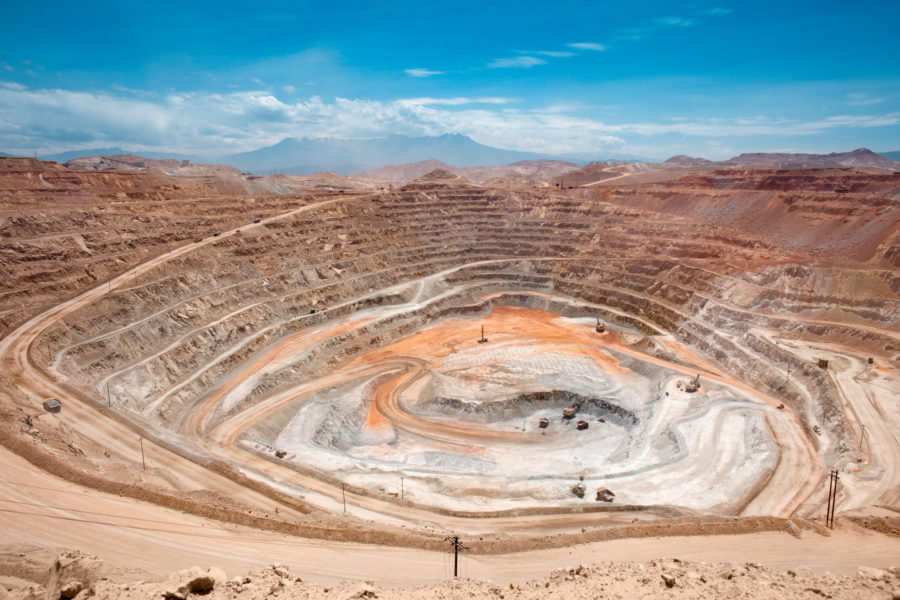Rio Tinto: what other consolidation options are there in the mining sector?
Amongst the swathe of comment, reaction and analysis surrounding Glencore’s attempted takeover of Rio Tinto – revealed recently but rebuffed back in August – there was little surprise that Glencore would attempt such a move.
Rio Tinto have a long, successful history in the mining sector, with experience gained over 140 years which has seen them rise to the pinnacle of their industry. As mining goes through another period of extended difficulty, consolidation is a reliable means of survival and Rio Tinto has much to recommend it.
As well as prestige and size, Rio comes with a healthy financial outlook. The company has a clean balance sheet, contrasting Glencore’s high debt. It keeps investors happy with a high dividend and low PE ratio. It is the world’s second biggest producer of iron ore: a metal that is currently lacking from Glencore’s portfolio.
But Rio Tinto have refused the deal, for now at least. Whether it could still go ahead is debatable: market rumour indicates that Glencore are now in talks with Chinalco (short for the Aluminium Corporation of China), Rio’s biggest shareholder. But state-run Chinalco still only own a fairly small percentage of Rio Tinto, and have in the past shown reluctance to allow such a major foreign player to come into existence under their watch.
That’s because China has a major reliance on iron ore imports, and understandably want to keep competition strong and varied to keep costs low. Allowing Glencore to take over Rio Tinto would in all probably see an end to their current strategy of ramping up iron ore production – Glencore CEO Ivan Glasberg has spoken out against the practise in the past – and in turn allow ‘Glen Tinto’ more control over iron ore prices.
A merger doesn’t just make sense from the point of view of Glencore, however. Rio Tinto have had a pretty tough time on the markets lately, after the shock of the financial crisis forced them into a period of renewed focus on iron ore. At first, that move looked wise but the current five-year lows in iron ore prices are cutting into revenues. And to add to their woes, China’s demand for iron ore has begun to wane.
These problems are not limited to Rio Tinto, or iron ore, but to further cut down costs with streamlining, and protect against any more drops in commodity prices (likely as production ramps up, and another round of government-led infrastructure building in China looks improbable), consolidation would be a good way forward. So what other options are out there?
The first name that springs to mind in any discussion of mining mergers tends to be BHP Billiton. A takeover bid may be unlikely thanks to its sheer size and value (BHP is worth over £92 billion) but a merger may be achievable. BHP brings more diversity than Glencore to the table and has a strong iron ore business. It is also better value than Rio Tinto at the moment, a painful 20% drop in share price over the summer has given BHP a P/E ratio of 10.29 (Rio’s is over 14).
BHP Billiton has, of course, attempted to take over Rio Tinto in the past. But that move was scuppered by both the global financial crash and Chinalco, who acquired their stake in Rio Tinto in a move widely seen as an attempt to block BHP Billiton.
Smaller miners may well feel the pinch harder than major ones if the current situation worsens, which makes moves for the likes of Anglo-American, Cliff’s Natural Resources or Antofogasta possible. Glencore could well switch its attention elsewhere if Rio Tinto proves to be a dead end, which may in turn force Rio to take action.
Only time will tell if the company can continue on its own. But as problems for major mining companies show little sign of abating, it seems safe to bet that the landscape of the mining industry may be in for some change over the next few years.
Spread bets and CFDs are leveraged products and can result in losses that exceed your deposits. The value of shares, ETFs and ETCs bought through a stockbroking account can fall as well as rise, which could mean getting back less than you originally put in.
This information has been prepared by IG, a trading name of IG Markets Limited. The material on this page does not contain a record of our trading prices, or an offer of, or solicitation for, a transaction in any financial instrument. IG accepts no responsibility for any use that may be made of these comments and for any consequences that result. No representation or warranty is given as to the accuracy or completeness of this information. Consequently any person acting on it does so entirely at their own risk. Any research provided does not have regard to the specific investment objectives, financial situation and needs of any specific person who may receive it. It has not been prepared in accordance with legal requirements designed to promote the independence of investment research and as such is considered to be a marketing communication. Although we are not specifically constrained from dealing ahead of our recommendations we do not seek to take advantage of them before they are provided to our clients.
By Patrick Foot, financial markets writer at IG – a leading provider of stockbroking, CFDs and currency trading.
More News
Resouro boosts titanium resource by 37% at Tiros project in Brazil
Total resources are now 1,400 Mt1 at 12% TiO₂ and 4,000 ppm TREO, the company said.
April 09, 2025 | 04:37 pm
Prime Minister Mark Carney vows to speed permits, make Canada energy superpower
The Liberal Party leader said at a campaign stop in Calgary that his government would create a Major Federal Project Office with a “one project, one review” mandate.
April 09, 2025 | 03:34 pm
Peru mining chamber sees copper output up 2-4% this year
That would put Peru's copper production between 2.79 million and 2.85 million metric tons.
April 09, 2025 | 02:53 pm
{{ commodity.name }}
{{ post.title }}
{{ post.excerpt }}
{{ post.date }}




Comments